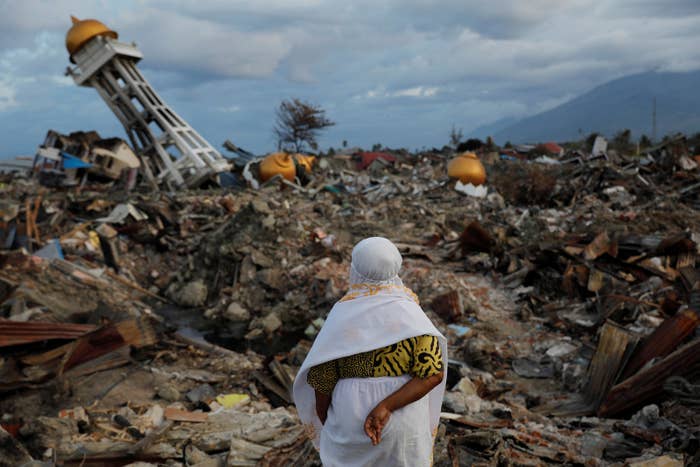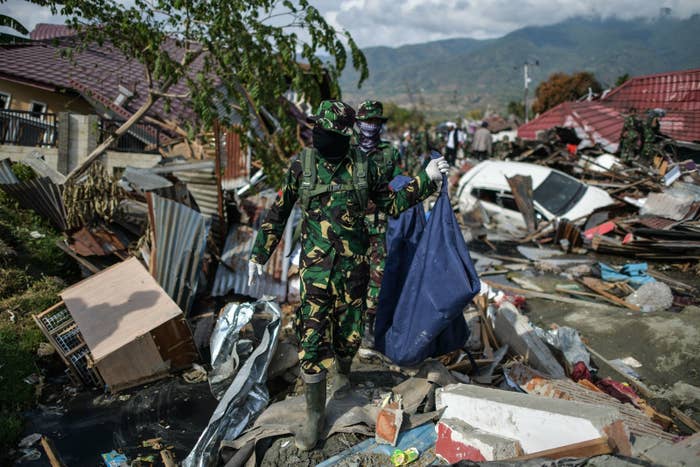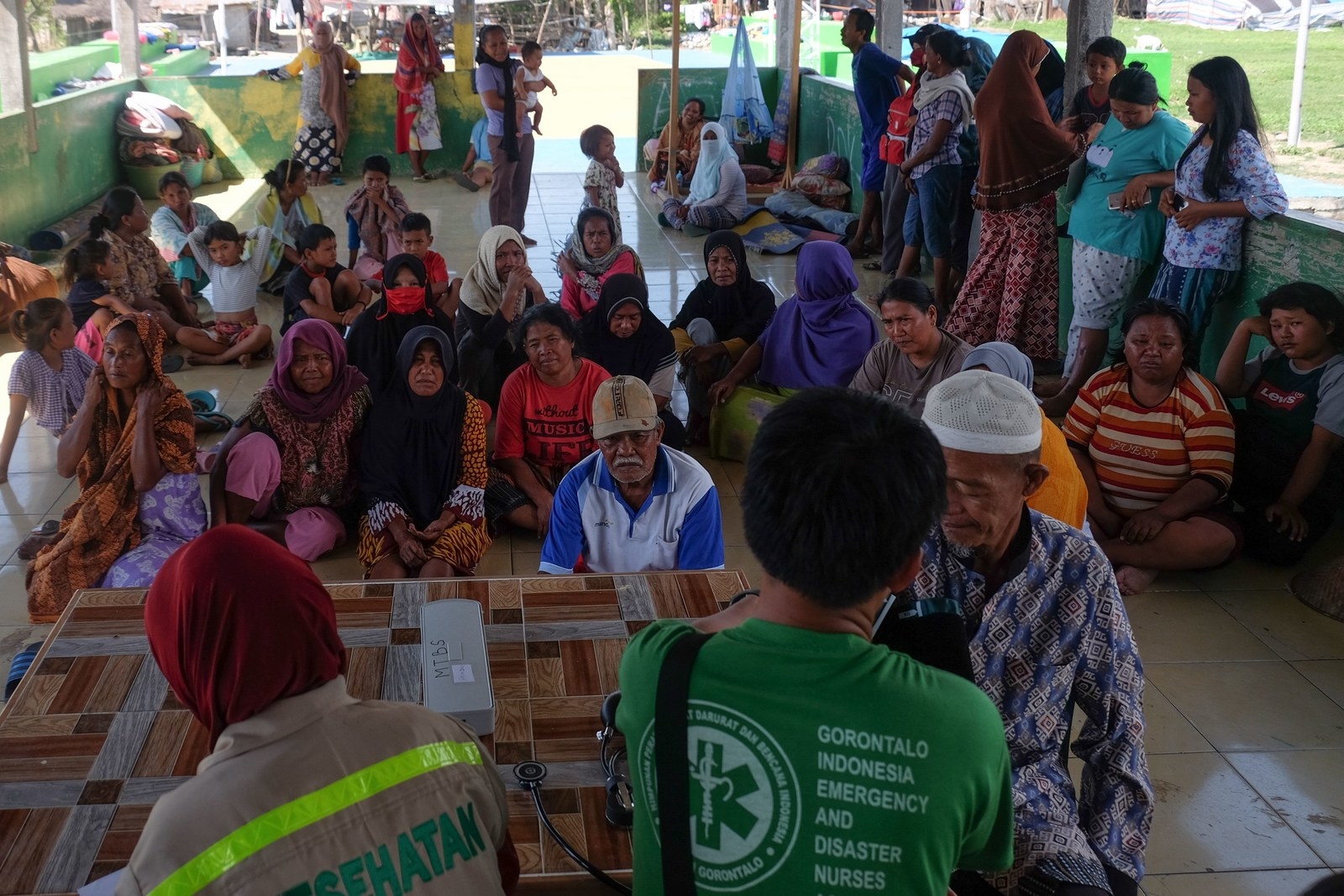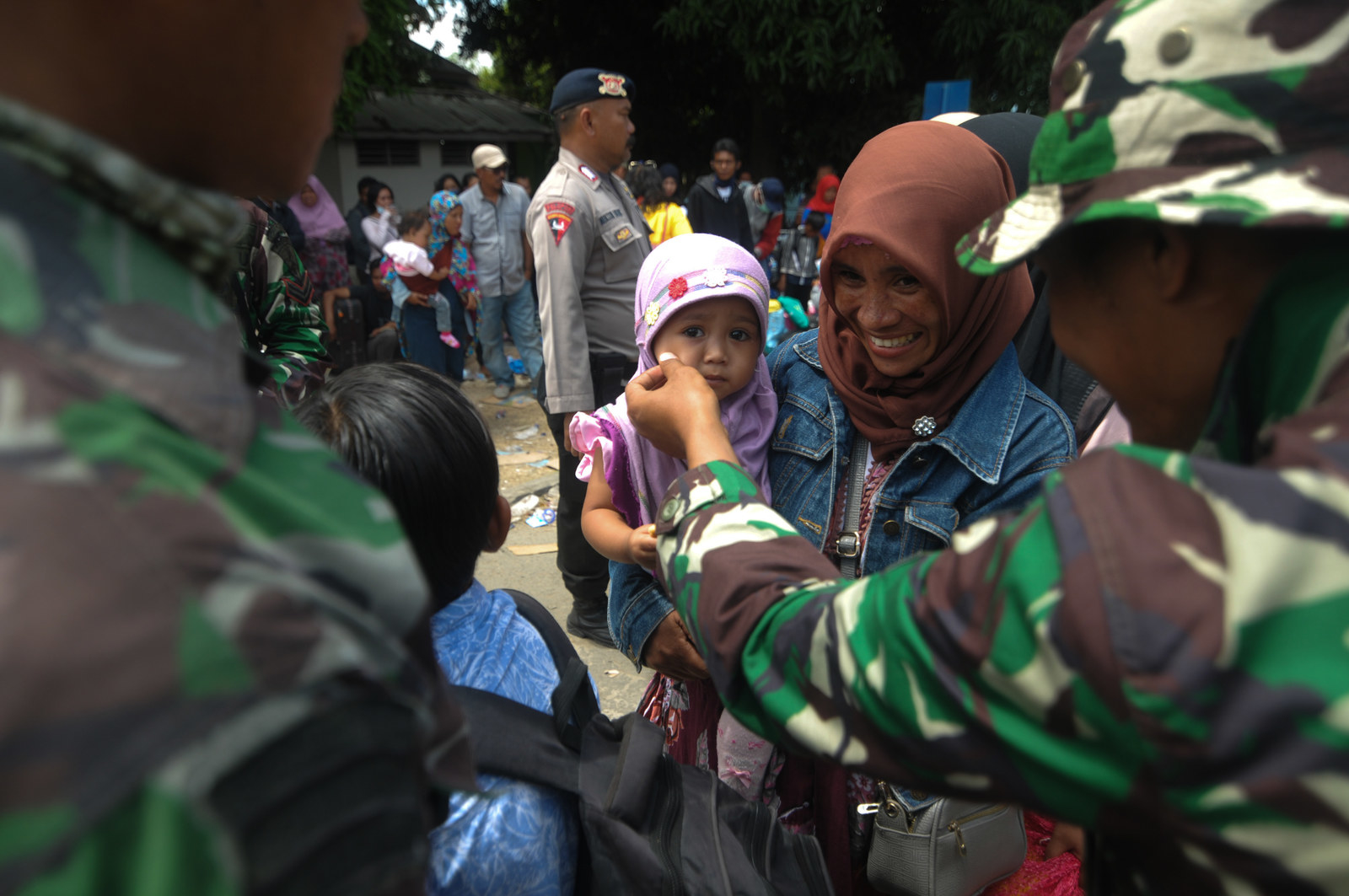
Almost 2,000 people have been confirmed dead and more than 5,000 remain missing, nine days after the double disasters of a magnitude 7.5 earthquake and 10-foot tsunami, which hit the island of Sulawesi, Indonesia, on Sept. 28.
The death toll now stands at 1,948, according to Indonesian authorities on Monday.
They had earlier confirmed that rescue efforts will finally stop on Thursday, two weeks after the events took place.

At a news conference in Jakarta on Sunday, Sutopo Purwo Nugroho, a spokesperson for Indonesia's disaster agency, BNPB, said that authorities were still working to confirm how many people were missing from villages where buildings had been sucked into liquefying mud.
Nightmarish conditions were seen across Sulawesi following the tsunami — several areas that were subjected to liquefaction, where soil turns to liquid and swallows up entire buildings, in some cases burying their occupants.
Hundreds of the dead who have been identified have been buried in mass graves in order to prevent the spread of disease.

Last week, the airport in the city of Palu was reopened, allowing aid to reach the island.
On Sunday, BNPB issued a plea for aid for those who survived the disaster, many of whom have seen their homes and towns destroyed.

Aid has begun to reach some of the more remote areas of the island, including the Sigi district, according to Al Jazeera, where waves of mud and rock have devastated villages, and in some cases dragged bodies 4 kilometers from their original locations. "They fear half of the population here is dead," Al Jazeera's Jamela Alindogan, who is on the scene, said.

More aid was also beginning to reach the remote parts of Palu and Donggala, according to a statement issued by the International Federation of the Red Cross.
First #UKaid arrives into Palu to help vulnerable Indonesians. We've sent 120 shelter kits to the city which can each provide immediate protection to a family of 5. More #UKaid is on its way. https://t.co/3N4PqfGFUh
Aid workers are focusing on getting clean water, food, and medical assistance to those who have survived the disaster. A series of mobile health clinics have been established across Sulawesi, according to the Indonesian Red Cross.
"More and more aid is arriving every day — a plane has just arrived with generators and tarpaulins from the government of New Zealand — and 70 tons of Red Cross relief goods are on their way to Palu," IFRC spokesperson Iris van Deinse said.

“Many roads are still impassible, and access is still a major challenge, but we are bringing goods in by boat and volunteers are carrying aid to isolated communities on foot," she continued.
“The shock and trauma here is palpable, and the area is still affected by aftershocks a week after the disaster. Red Cross teams are doing everything they can to comfort survivors and evacuate them to safer areas of the island.”

Aid workers with the Indonesian Red Cross are also working to escort survivors, from areas including Petobo and Balaroa, to safety.
